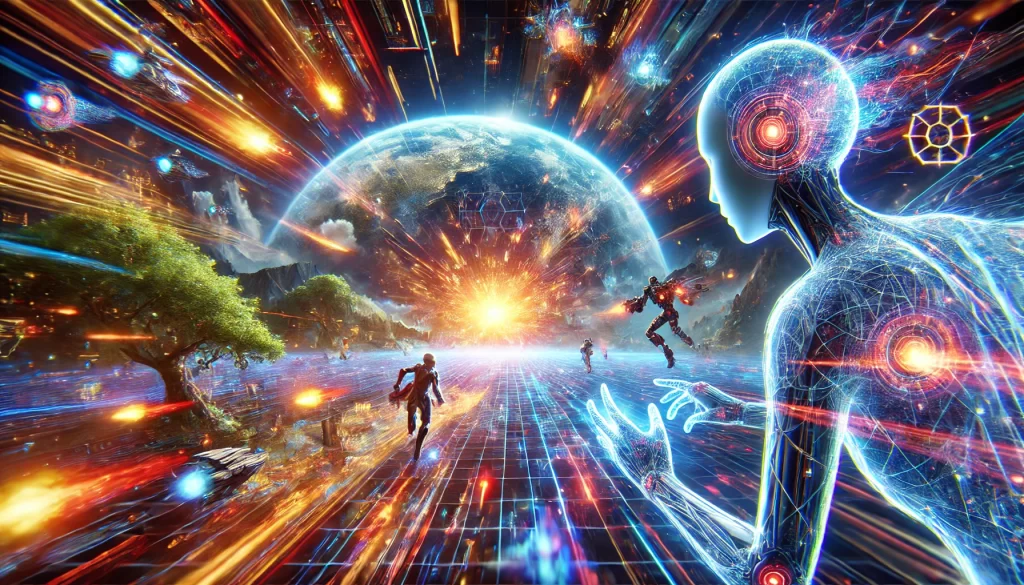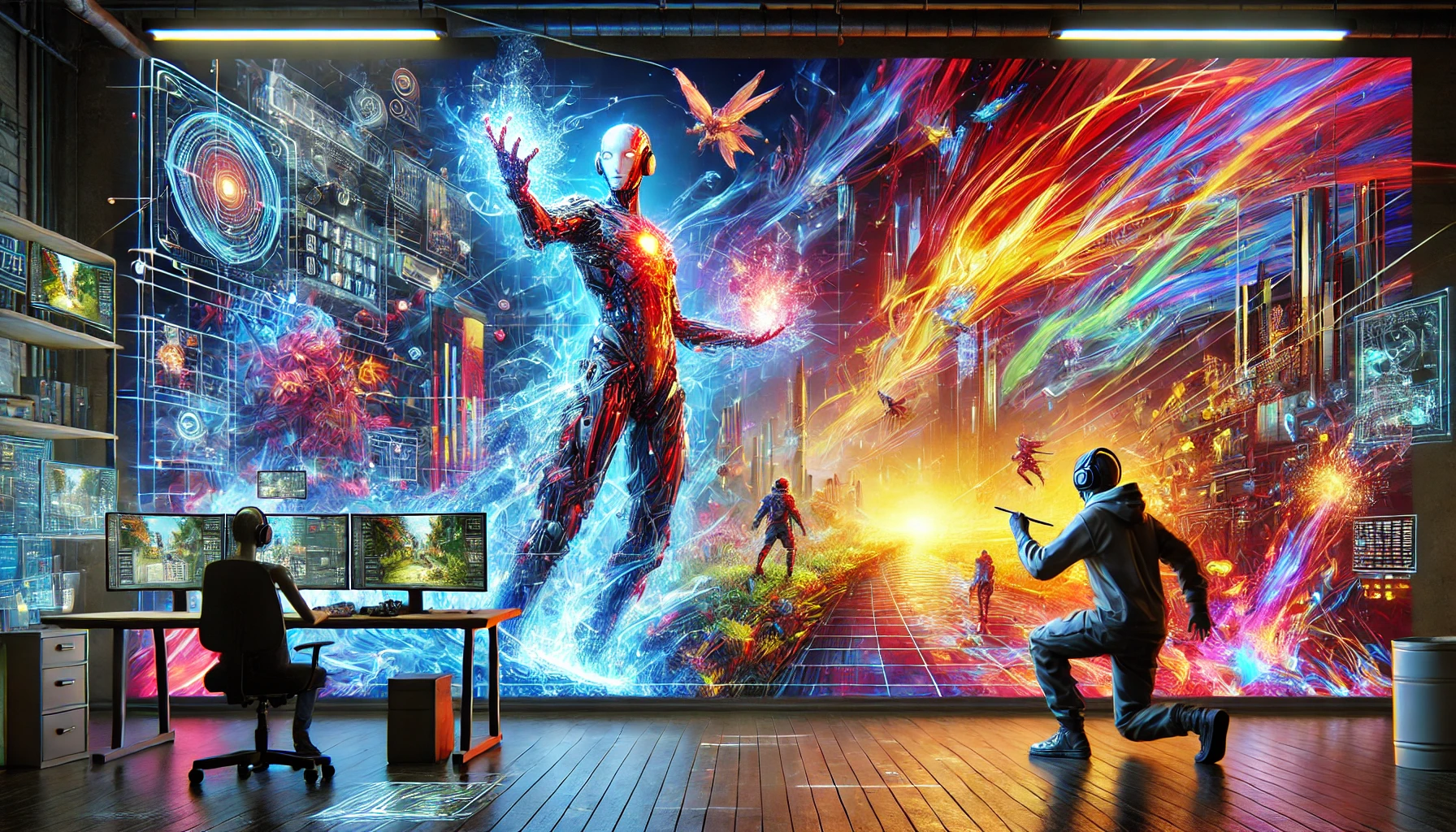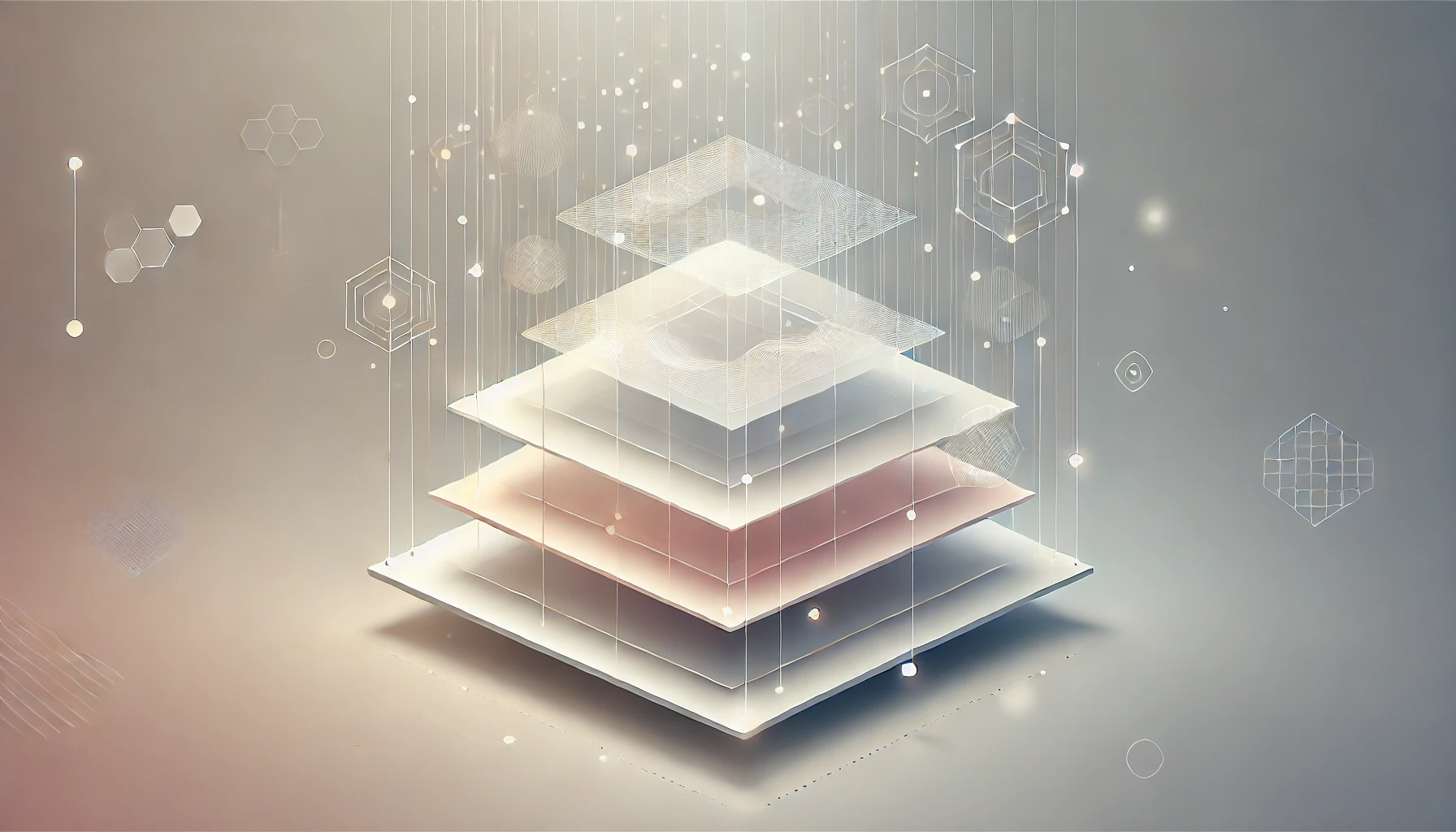Welcome to the future of gaming, where you’re not just playing the game—you’re living it. In the time it takes to make a sandwich, AI can now generate an entire open-world environment, with dynamic characters, real-time weather changes, and events that respond to your every move. Sounds like sci-fi, right? Enter GameGen-O, an AI model developed by Tencent that’s rewriting the rules of game creation. Let’s break it down, and trust me, even if you’re not a gamer, this AI-powered revolution is something you’ll want to keep an eye on.
What is GameGen-O?
Developed by Tencent, the same company behind games like League of Legends and PUBG, GameGen-O is an AI that can generate open-world games in real-time. Forget spending years creating assets and coding—this AI does it all for you. Imagine it like a supercharged, game-building Michelangelo—but instead of sculpting marble, it’s generating AAA games like GTA and Red Dead Redemption from scratch.
But what makes this AI different from traditional game engines like Unreal or Unity? For starters, it doesn’t just assemble pre-programmed elements; it creates them on the fly. From dynamic environments that evolve over time (think sunrises, storms, and snowfalls) to characters that respond to your commands in real-time, GameGen-O pushes the limits of what’s possible in gaming.
How It All Started: A Data Goldmine Called GameData
Tencent didn’t just throw a couple of game clips into a machine and hope for the best. They compiled a massive dataset—GameData—with 32,000 raw videos from popular games like GTA V and Red Dead Redemption 2. These clips are broken down into smaller scenes, annotated by human experts and enhanced by GPT-4-trained models specifically for gaming. It’s like teaching a child how to cook by giving them a cookbook the size of the Library of Congress.
Why is this important? It means that GameGen-O isn’t just “winging it” when it generates gameplay. It’s trained on top-tier content, making it capable of spitting out Red Dead Redemption-level visuals and gameplay in a matter of minutes. Boom. Welcome to the future.
From Text to Immersive Worlds
The real magic happens during the two-part training process: Foundation Pre-training and Instruction Tuning. Sounds fancy, right? It is.
-
Foundation Pre-Training: This is where GameGen-O learns to take a simple text prompt—like, "Generate a lush forest with dynamic weather"—and turns it into a fully interactive environment. It’s like watching Bob Ross paint a forest, except Bob Ross is an AI, and the forest comes to life with thunderstorms and falling leaves. 🎨🌧️
-
Instruction Tuning: This part allows the AI to respond to real-time inputs. For example, say "make the sky stormy," and GameGen-O instantly darkens the sky, throws in some thunderclouds, and even shifts the wind direction for dramatic effect.
In Case You’re Wondering: Yes, It’s Like Magic
Imagine walking through a game like The Witcher and saying, "I want a dragon to attack now," and boom—a dragon appears. Or "make the river flood," and suddenly you’re paddling your way out of a flash flood. GameGen-O takes gaming beyond pre-programmed storylines and allows for endless, dynamic experiences.

GameGen-O’s Game-Changing Features
Character Creation: More Than Just Pretty Faces
Forget loading up character models like Geralt of Rivia or Arthur Morgan. GameGen-O can create entirely new characters on the fly. Want a cyberpunk monk wielding electric nunchucks? No problem. How about a Victorian vampire with a penchant for horseback riding? You got it.
This opens up endless possibilities for both players and developers, enabling everyone from hobbyists to AAA studios to build incredibly detailed worlds and characters without a ton of resources.
Environment Generation: Weather Like You’ve Never Seen Before
GameGen-O’s ability to generate immersive, evolving environments is perhaps its most exciting feature. Need a desert landscape with sandstorms and pyramids? Done. Want to switch it up to a futuristic metropolis with neon-lit streets and monsoon rains? Easy peasy.
Dynamic Environment Examples:
| Scenario | Action |
|---|---|
| Lavender Fields in Spring | Soft sunlight, birds chirping |
| A Stormy Beach | Waves crashing, thunder rumbling |
| A City During a Robot Uprising | Fires blazing, robots marching |
The AI handles this all in real-time, meaning that every action you take could influence the next event, making gameplay far more interactive and, frankly, unpredictable.
The Business of GameGen-O: A Democratization of Game Development
Here’s the kicker: GameGen-O isn’t just for massive development teams. Smaller teams or even solo developers can use it to build AAA-quality games. This could democratize the game development industry, allowing indie creators to produce games that are on par with industry giants like Rockstar Games and Ubisoft. Imagine launching your own open-world game on Steam with the same level of visual and interactive fidelity as Red Dead Redemption 2.
But What About Intellectual Property?
Here’s where things get sticky. As GameGen-O evolves, the boundaries of intellectual property could get murky. If an AI generates a game that’s “inspired” by The Witcher, who owns that game? The developer, Tencent, or the AI? It’s a question the gaming industry will have to address soon, as AI-generated content blurs the lines of originality and ownership.
Beyond Gaming: Film, Virtual Reality, and City Design
GameGen-O is just the beginning. Tencent has also been working on a model called TenxGen, which is already generating large-scale cities. Imagine combining these two models—GameGen-O for dynamic content and TenxGen for architecture—and building entire virtual worlds or cities. Heck, we could see this tech being used in virtual reality experiences or even city planning.
The Future: AI-Generated Worlds Everywhere
In just a few years, AI-generated games could become the norm. GameGen-O’s current limitations—like the inability to fully interact with every game element in real-time—are likely to disappear with future updates. We’re talking about an era where games, movies, and even virtual experiences are generated and controlled entirely by AI.
Thought-Provoking Questions
- Could AI eventually replace traditional game development entirely?
- What happens to intellectual property rights when an AI creates content inspired by existing games?
- How would AI-generated games affect the diversity of voices and ideas in the gaming industry?
Let’s continue the conversation in the comments. What excites or concerns you the most about this new frontier? Also, if you’re as fascinated by this as I am, why not apply for residency in the “Shining City on the Web” and join the iNthacity community today? Let’s shape the future together.




















Post Comment
You must be logged in to post a comment.